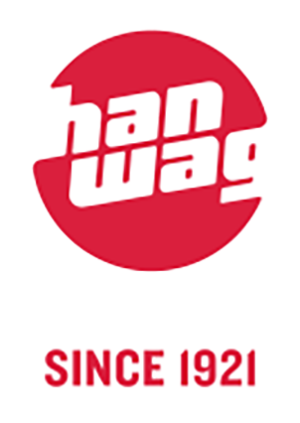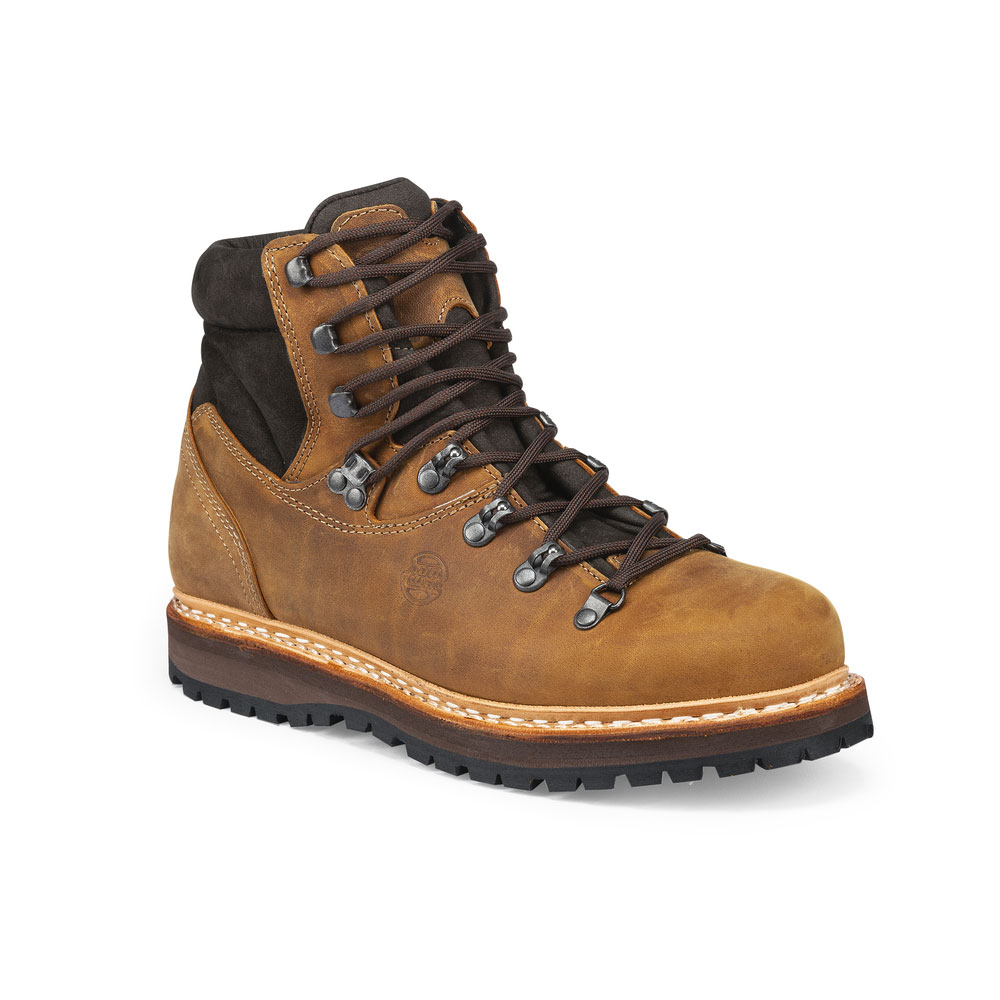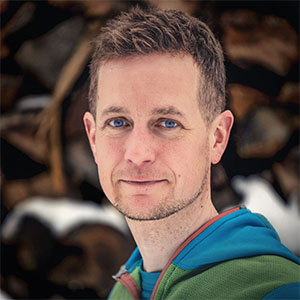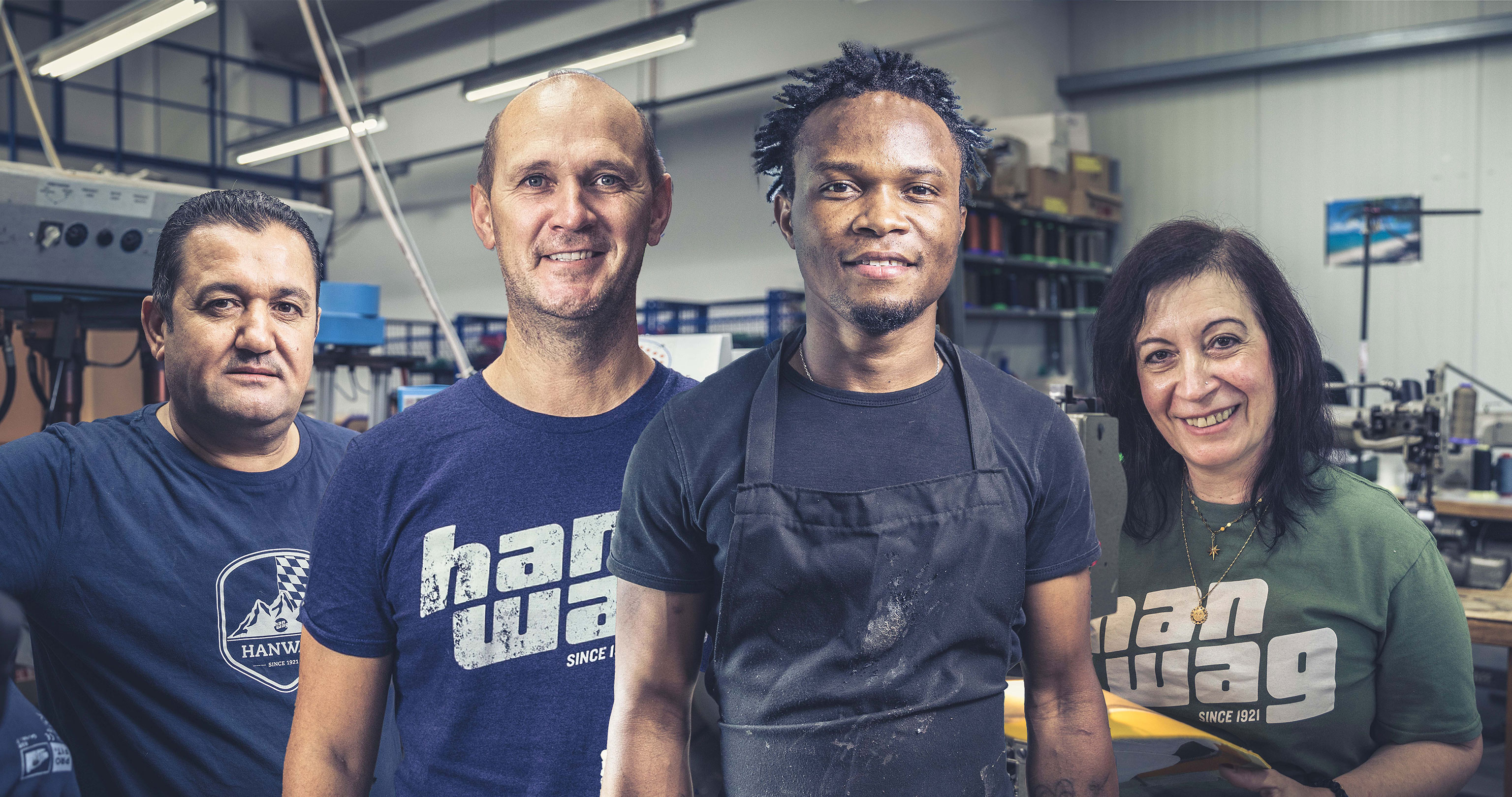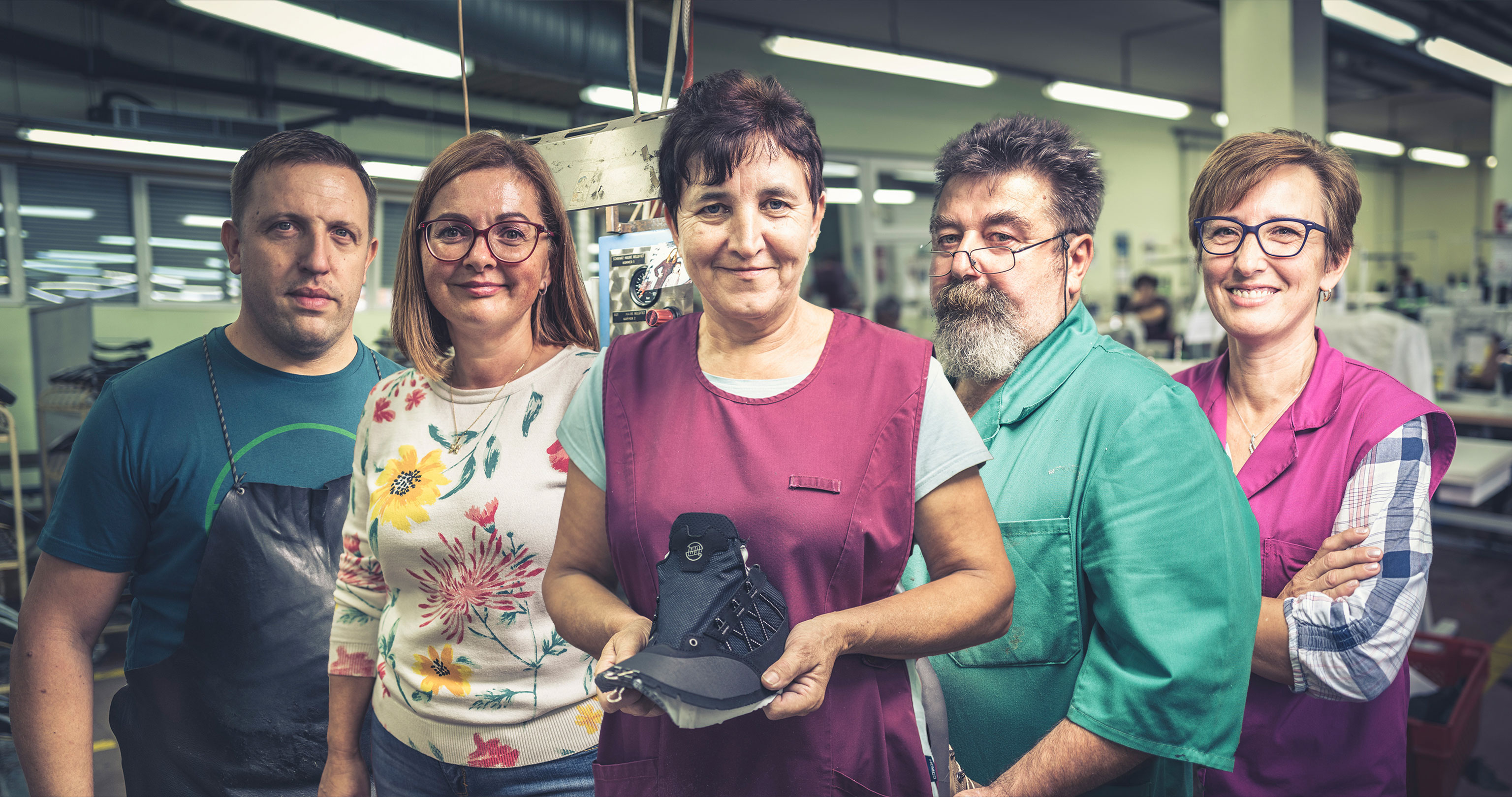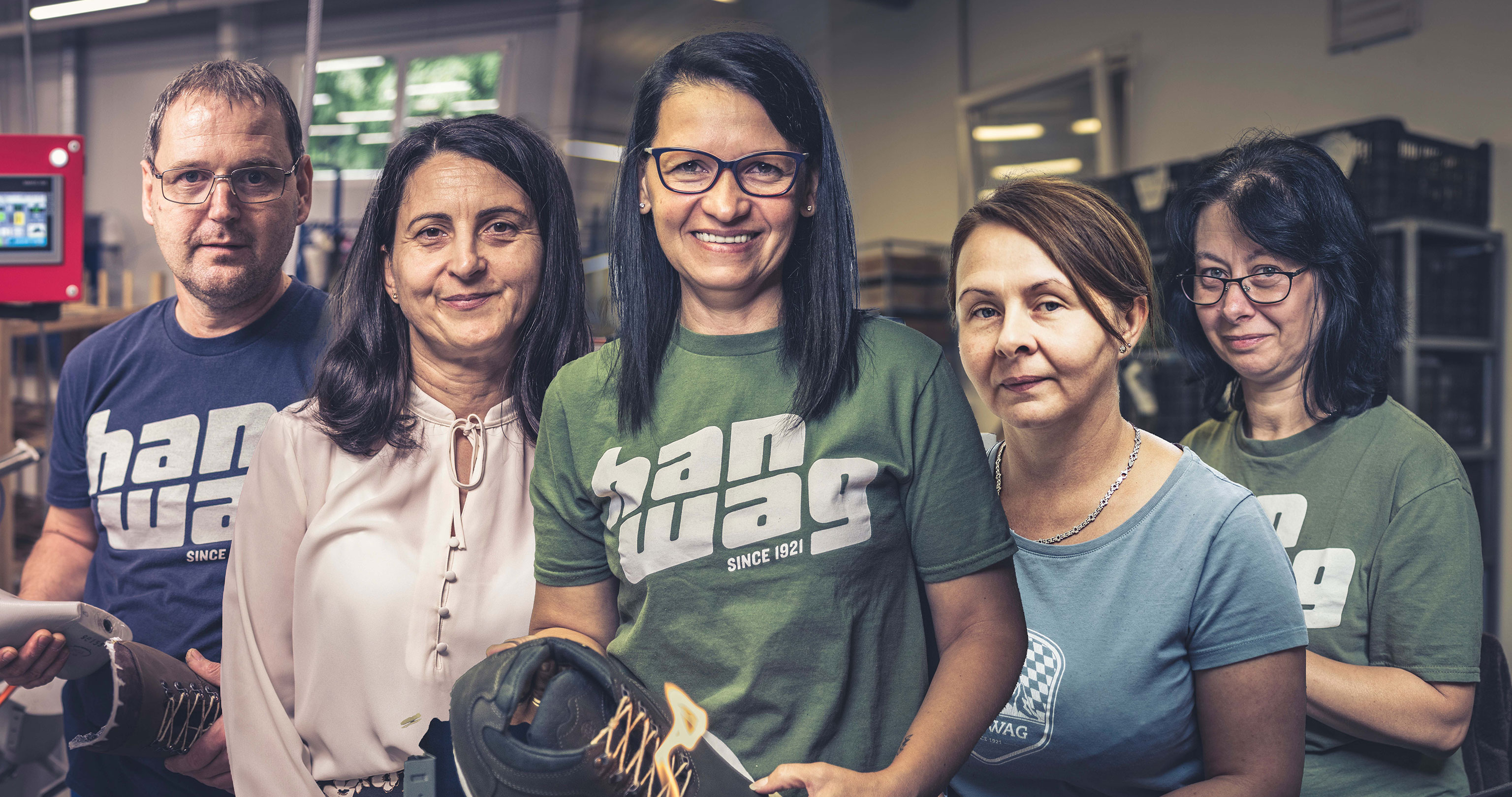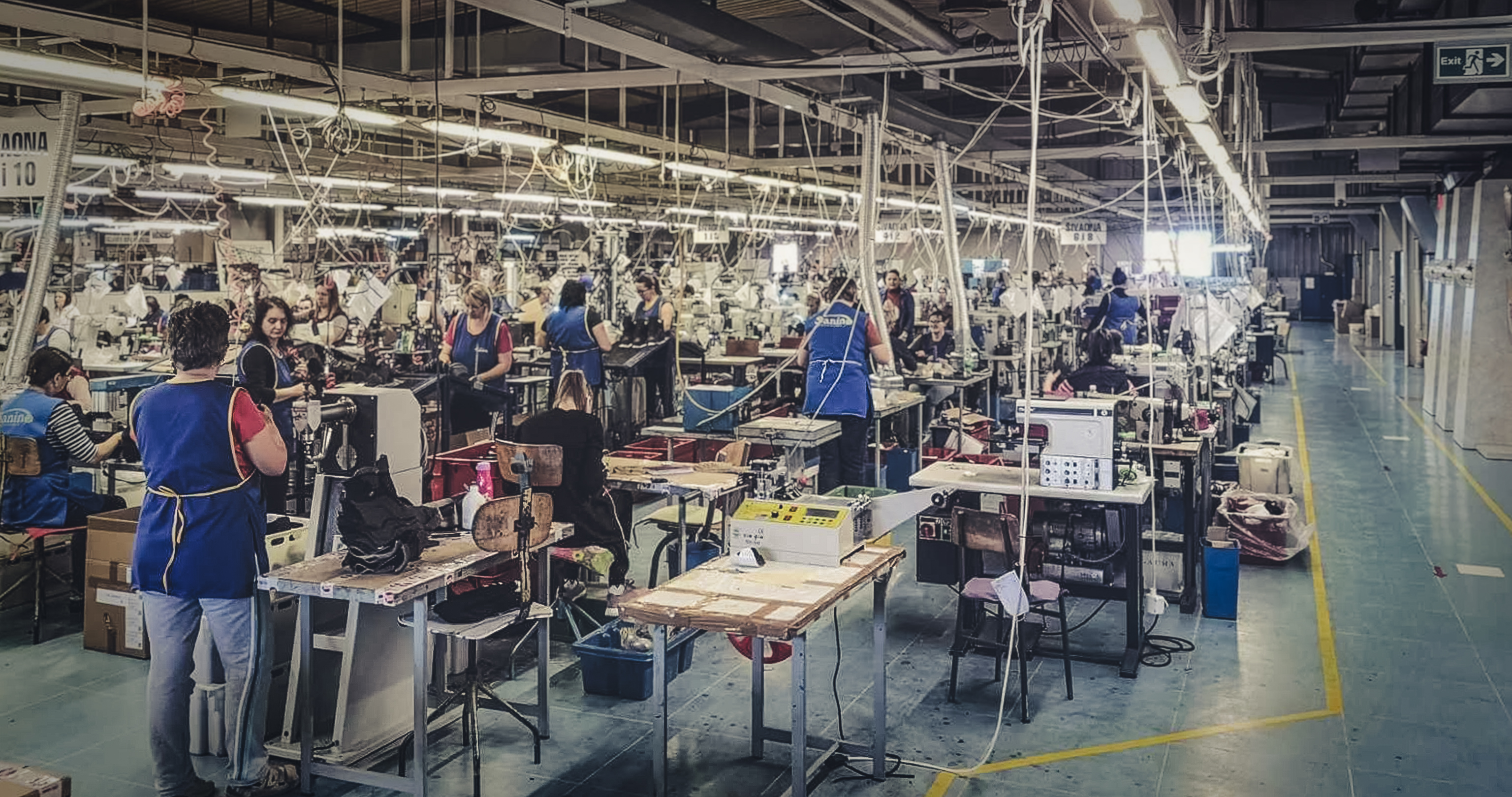Updated on
‘Made in Europe’ road trip – check out the stops:
–> Visiting the headquarters in Bavaria
–> Our biggest footwear factory, Croatia
–> A day in the life of the HANWAG factory in Hungary
–> Traditional footwear craftsmanship in Swabia
–> A footwear dynasty in Bosnia
HANWAG manufactures exclusively in Europe. But what does that actually mean? And more specifically: who are the people whose skills and craftsmanship are behind our high-quality footwear?
In this series, we invite you to join us on a road trip through five HANWAG production facilities in four different European countries. You’ll find out how our boots and shoes are made. And you’ll meet four fascinating people who make them too. In episode 4 we pay a visit to the specialist factory that makes our double-stitched boots in Swabia, southwestern Germany.

Expert craftsmanship – double-stitched boots
- Vladut: “Quality made in Germany, not China”
- Siegfried: “I enjoy passing on my expertise”
- Lydia’s footsteps
- Rolf: “Good shoes are worth it”
What a trek! We’ve passed through Budapest, Vienna and Munich on our ‘Made in Europe’ road trip, and now we’re deep in Upper Swabia (Oberschwaben) in the states of Baden-Wuerttemberg and Bavaria, down in southern Germany. To be precise, we’re in Oelkofen, in the municipality of Hohentengen. “Yes, we are slightly off the beaten track,” jokes Helga Reck, as she meets us in front of the Reck & Sohn shoe factory. “There can’t be many places in Germany where it takes an hour to get to the nearest motorway.”
Helga and Joachim Reck are the third generation to run the company founded by his grandfather. And it’s one of the few shoemakers that still masters the double-stitched construction method. All HANWAG double-stitched models are assembled here – in other words the soles are stitched to the uppers. (–> Find out more: Construction) Making our way through the factory, past countless, narrow rows of shelves full of boots or uppers, we head to see the machines.
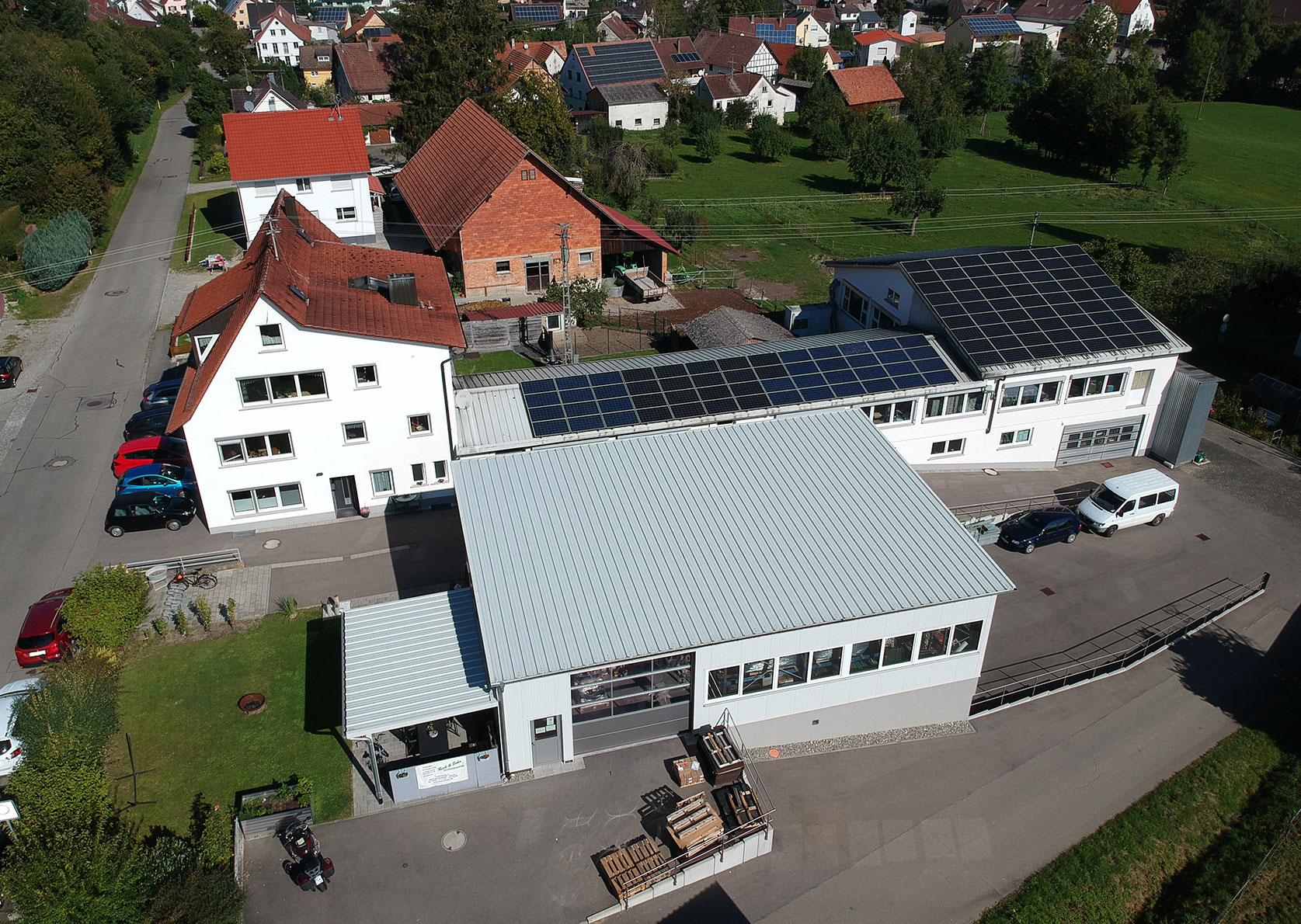
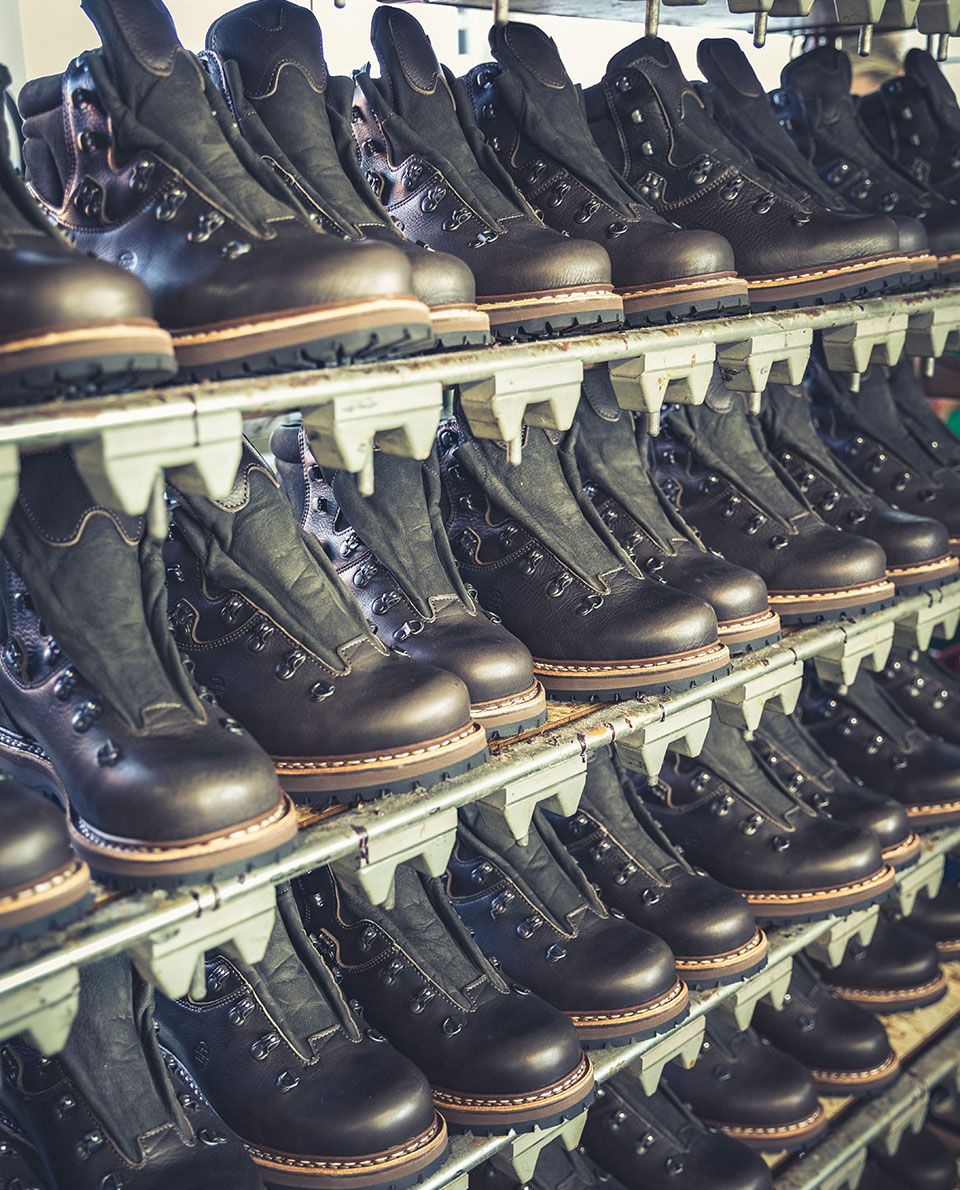
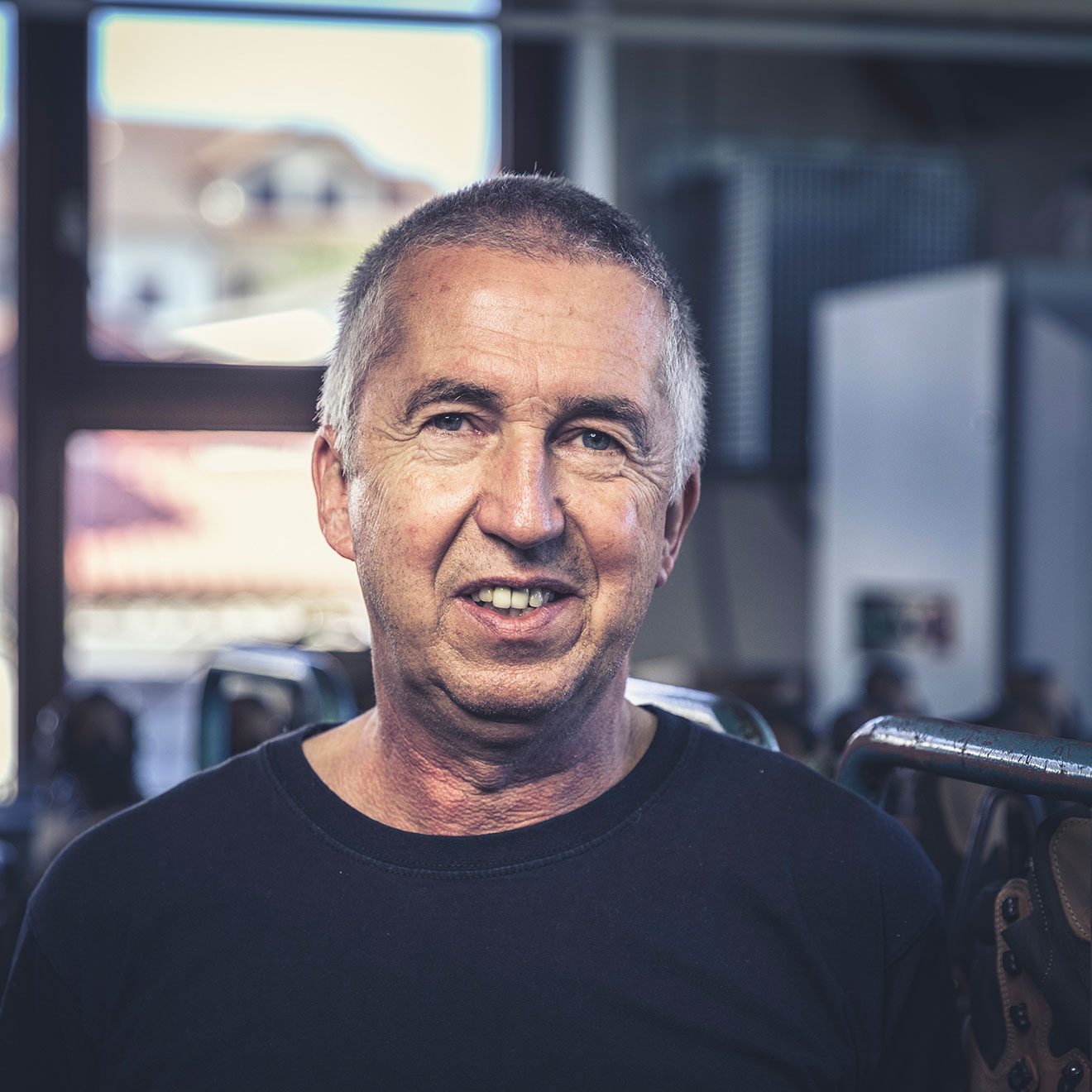
“Hardly anyone manufactures machines to make double-stitched boots these days.”
Managing director Joachim ReckThe oldest machine here is a special sander, which is as old as HANWAG – so it’s about 100. “And it will run for another century too,” assures Joachim Reck. Finding spare parts, or in some cases even new machines, has become a real challenge. “Hardly anyone manufactures double stitching machines these days. Whenever I hear one is up for sale somewhere, I head out immediately to go and see it. At the back of our factory, you’ll see a collection of old machinery – that’s our spare parts depot.” Moreover, there are few technicians with the right expertise left.
The first stage in making a double-stitched boot is to add the welted seam. To do this, 23-year-old Vladut is working his way through a shelf full of boot uppers that are destined to become HANWAG Berglers. The workshop has a strong smell of grease and leather. The huge, clanking machine with the large needle is as tall as he is. Vladut is really having to exert himself. It’s a very physical process that looks almost archaic.
It takes him around a minute for each welted seam. And that’s just one of the nearly 150 individual steps that it takes to make a double-stitched boot. Consider also the high-quality leather and other first-class materials and you soon see why double-stitched hiking boots are a little more expensive.
“These boots will go a long way,” adds Joachim Reck. “Everyone is talking about sustainability. Our products have a long lifespan and are mainly made of natural materials. And if the sole does wear down, you can have it resoled. Boots hardly get more sustainable than this.” In addition, the Recks have solar panels on the roof. They cover half of their electricity consumption.
The Reck shoe factory has some 22 employees. Many of them are experienced shoemakers who are literally keeping old handcrafted methods alive. Younger members of staff, like Vladut, hope that these continue into the future.
4 employees introduce themselves
1 Vladut: “Quality made in Germany, not China”
The rattling is almost deafening as Vladut places a boot upper under the needle, and slowly, carefully moves it round in steady, even movements. The 23-year-old shoemaker from Reck is working on the first stage in double stitching: the welt seam.
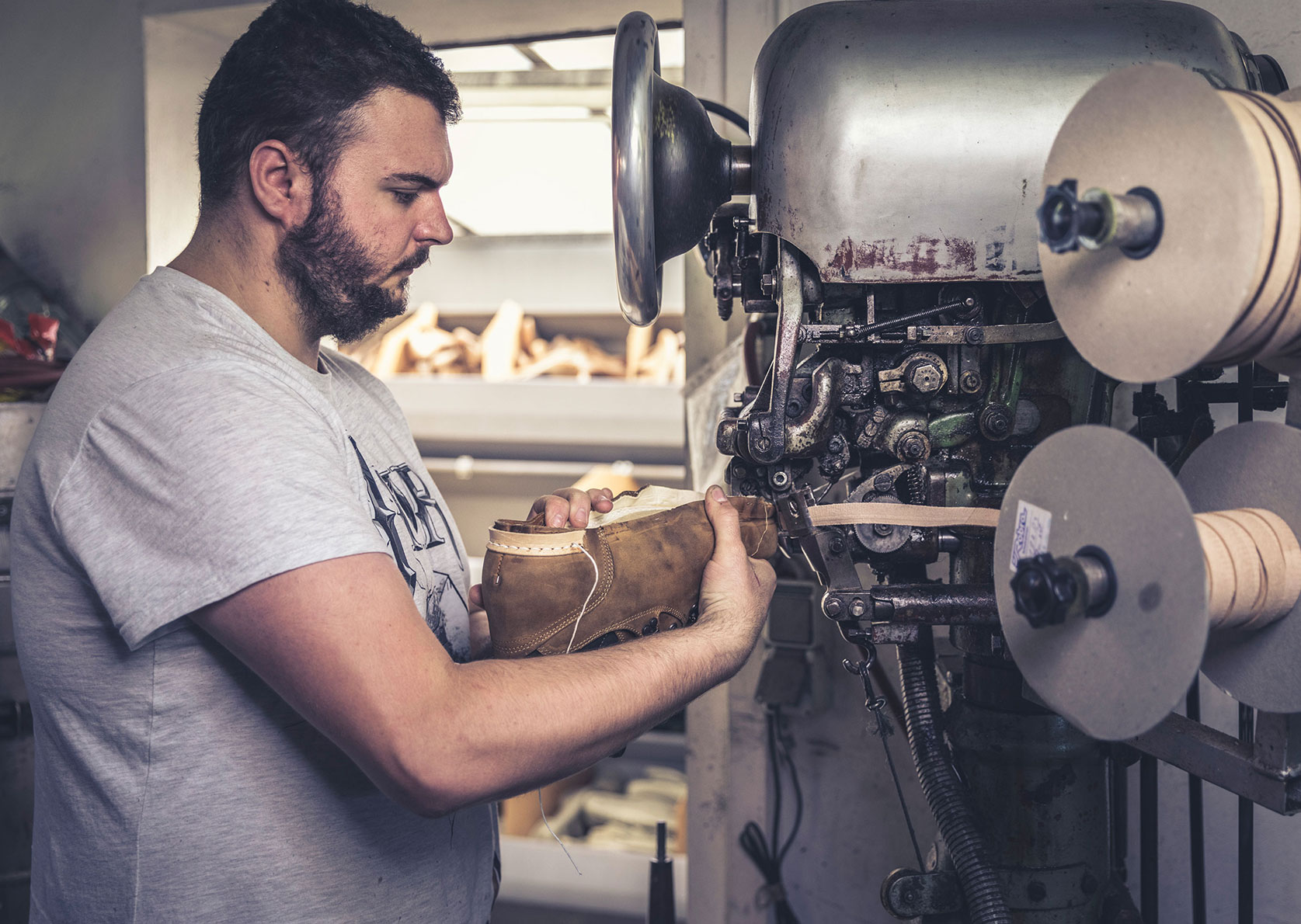
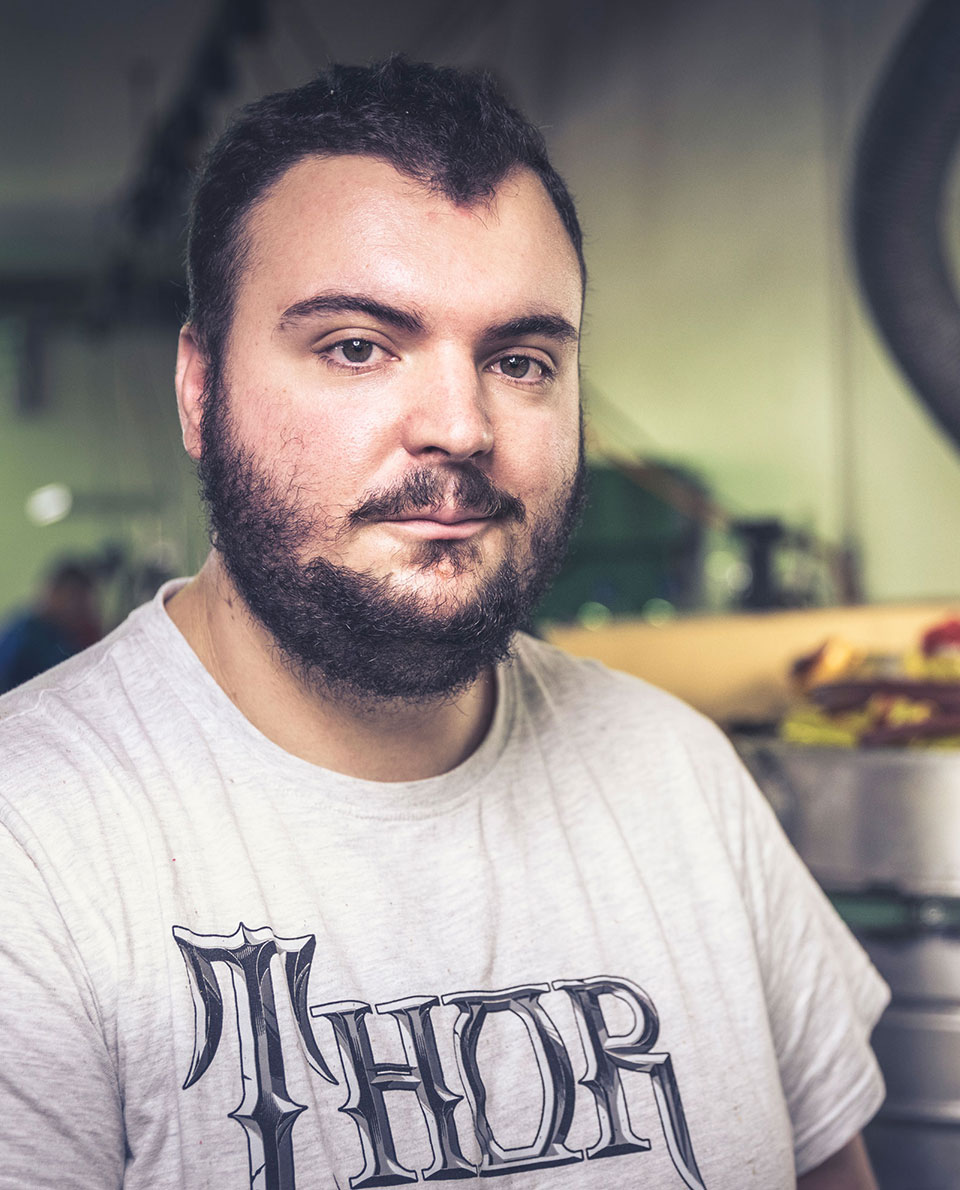
‘Vladi’ as everyone calls him, moved here from Romania in 2018. “I had a cousin who was working here. She told me there were good jobs and flats in Germany.” Is it back-breaking work? Vladi plays it down: “It’s not so difficult or tiring for me. I’m young, it’s OK.” However, he has to mind what he’s doing. “I have to keep my hands safe. And the stitches need to be exact and even. If a stitch goes wrong then the whole boot is ruined.” Vladi stitches several dozen pairs in an eight-hour shift.
His father was a shoemaker before him. “But he only made slippers. I make real shoes. Quality made in Germany, not China,” says Vladi with a mischievous laugh. His brother is coming to work at the Reck shoe factory too: “I’m very happy here and proud of my work. And my father is proud too.”
3 Questions for Vladut
-
What’s the most important aspect of your job?
“I have to work accurately without mistakes. It’s important to be strong. I have to eat lots.” (laughs)
-
What does HANWAG mean to you?
“Quality, good shoes and money for me and my family.”
-
What would you like to wish HANWAG for the next 100 years?
“That it continues to sell lots and lots of boots.”
2 Siegfried: “I enjoy passing on my expertise”
When double-stitched boots are soled, excess material needs to be sanded off. “Only the boss and I are allowed to use the milling machine,” mentions Siegfried. “You have to watch out that you don’t lose a finger!” The senior manager once got a finger caught…”
Siegfried knows him well – he’s Joachim Reck’s father. He learned his shoemaking skills from him back in 1978. Subsequently Siegfried worked in other industries for 21 years, from plastics construction to furniture making and casting. “In 2011, I came back to work with the ‘junior manager’ – Joachim Reck.” And at 64, despite being old enough to retire, he continues to work part-time for a modest wage.
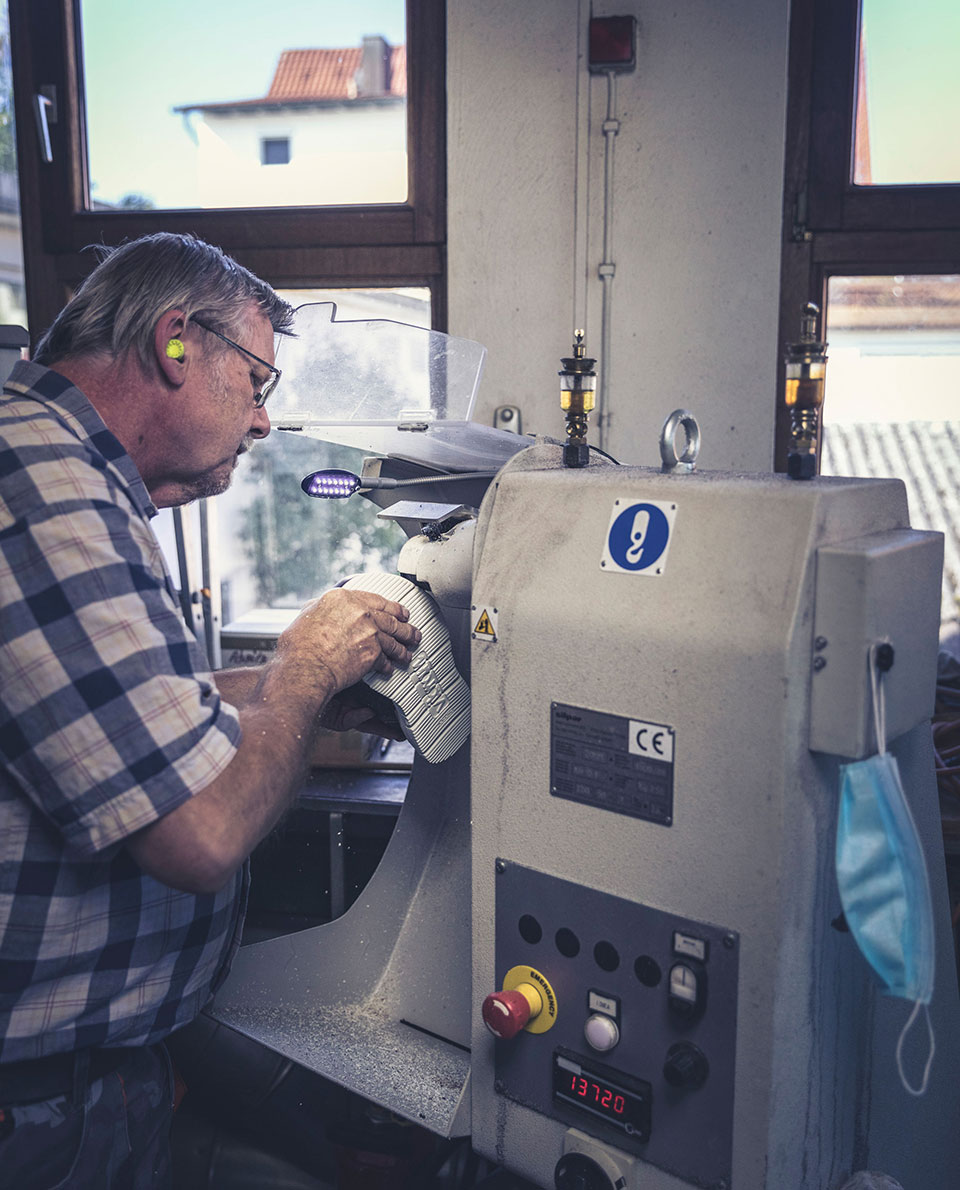
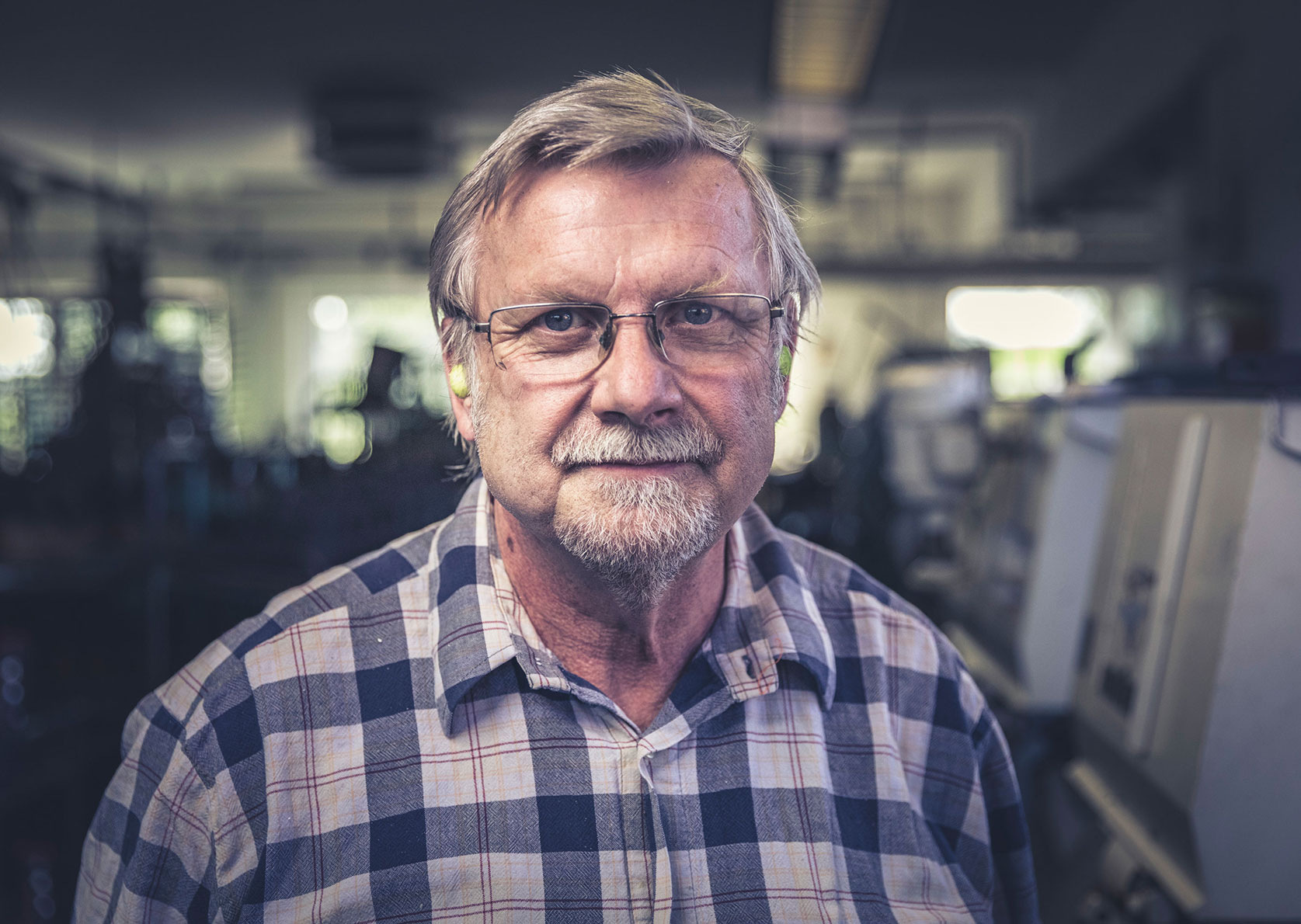
As the shoe factory was having problems recruiting skilled workers, Joachim asked him if he would stay on to work on an hourly basis. “Naturally, I accepted,” says Siegfried. “The boss was very accommodating, as I wanted to have more free time for my family.”
When Vladi’s brother starts at Reck, the plan is for him to help Siegfried with the sanding. “I enjoy passing on my experience to young people.” So, will he let him use the milling machine? “We’ll have to wait and see.”
3 questions for Siegfried
-
What’s the most important aspect of your job?
“Stereoscopic vision, because of the shape of the shoe. When you are milling and sanding, you have to estimate correctly how much pressure to use on the machine.”
-
What does HANWAG mean to you?
“Definitely quality. You feel it as soon as you touch the leather. It’s completely different to cheap shoes.”
-
What would you like to wish HANWAG for the next 100 years?
“That people continue to be ready to pay a reasonable price for such high-quality footwear in future. After all, everything is done here by hand.”
3 Lydia’s footsteps
Lydia has lived in Oelkofen since she was a girl and she’s worked here since 1982. “In those days, Reck had 30 employees,” she says, in her gentle Swabian accent. “My kids were still at school.” I saw an advert in the newspaper that Reck was recruiting. I talked to the senior manager and he asked me if I could work on the soles. And I said: “Yes, I can.”
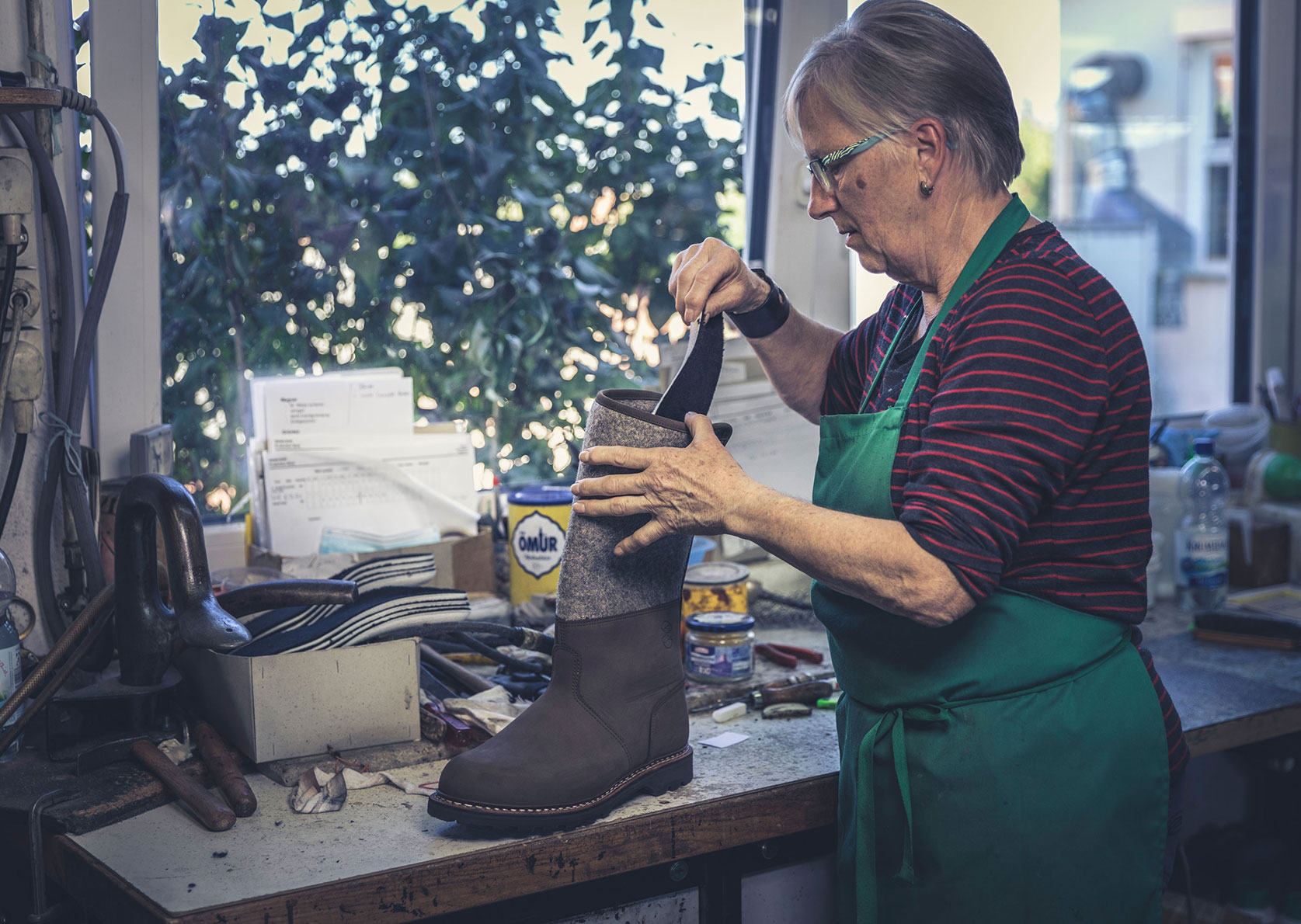
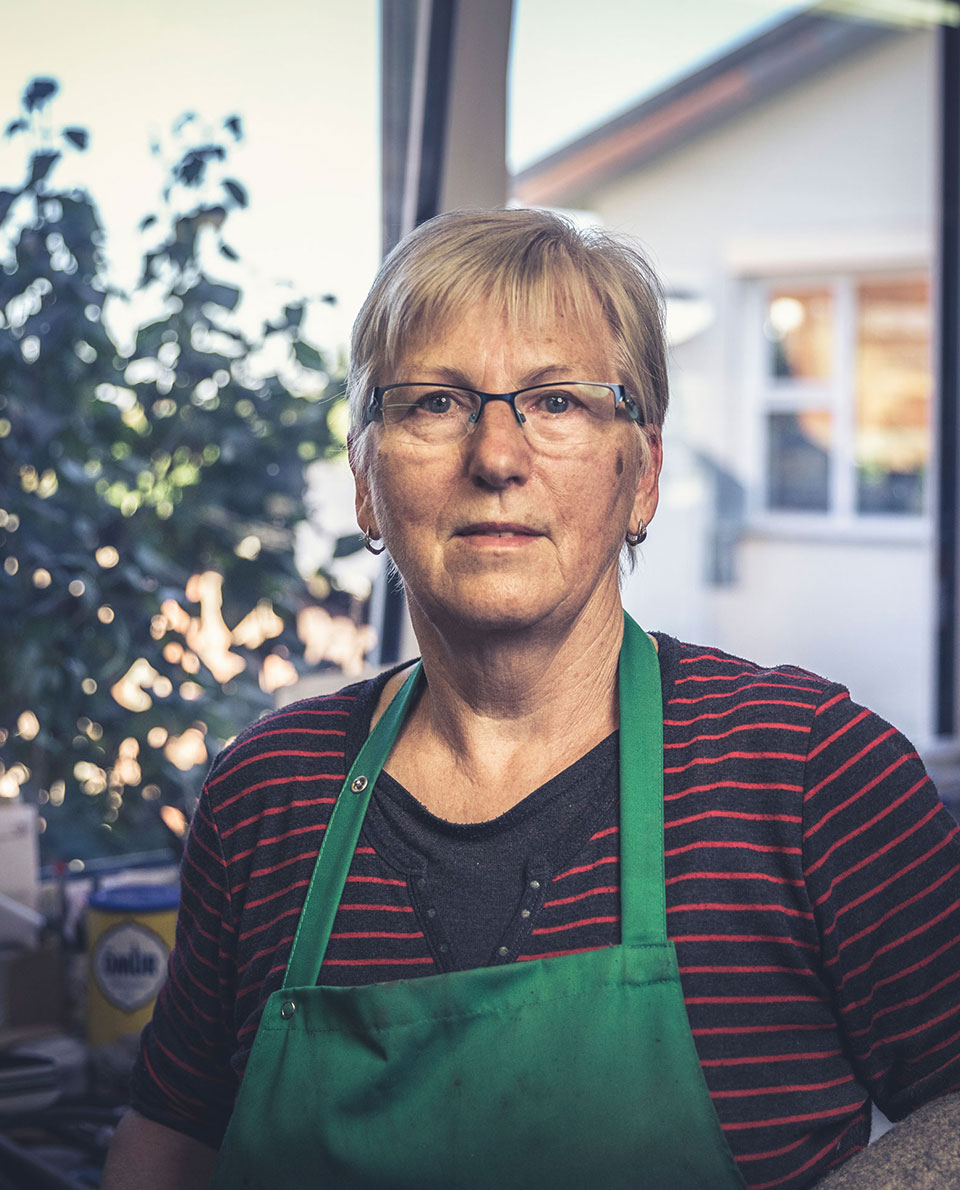
Over the years, Lydia has worked on many different areas of the shoemaking process. From gluing, to riveting and removing clamps. Her broad experience makes her ideally qualified to work in Quality Control. In addition, Lydia also helps out in the packing department and anywhere else where they are short of staff.
“I’m aware of the responsibility for what I do, I’m the final check,” says the mother of two, who has four grandchildren. “This is very different to making cheap-quality footwear with cardboard insoles.” Lydia is 68 years old, but she continues to work part-time for a minimum wage. Like Siegfried, this is her way of saying thanks for the long years of support from her boss. “I’m very happy to be able to return the favour.”
One of her grandchildren is very dextrous, says Lydia, and he’s fascinated by the shoe factory. Who knows, maybe he’ll follow in her footsteps one day.
3 questions for Lydia
-
What’s the most important aspect of your job?
“Diligence, precision. And supporting the company. That’s also important.”
-
What does HANWAG mean to you?
“Making high-quality footwear.”
-
What would you like to wish HANWAG for the next 100 years?
“That HANWAG continues to move onwards and upwards.”
Find out more: ‘Made in Europe’ – what HANWAG bases its pledge on
4 Rolf: “Good shoes are worth it”
What do Rolf and his machines have in common? They have been working reliably and efficiently for decades. The fully-trained shoemaker has been working at the Swabian shoemakers Reck & Sohn, since 1985. As such, he is the company’s longest-serving employee. Both he and his lasting machine are completely unique. There is only one of them in the whole world.
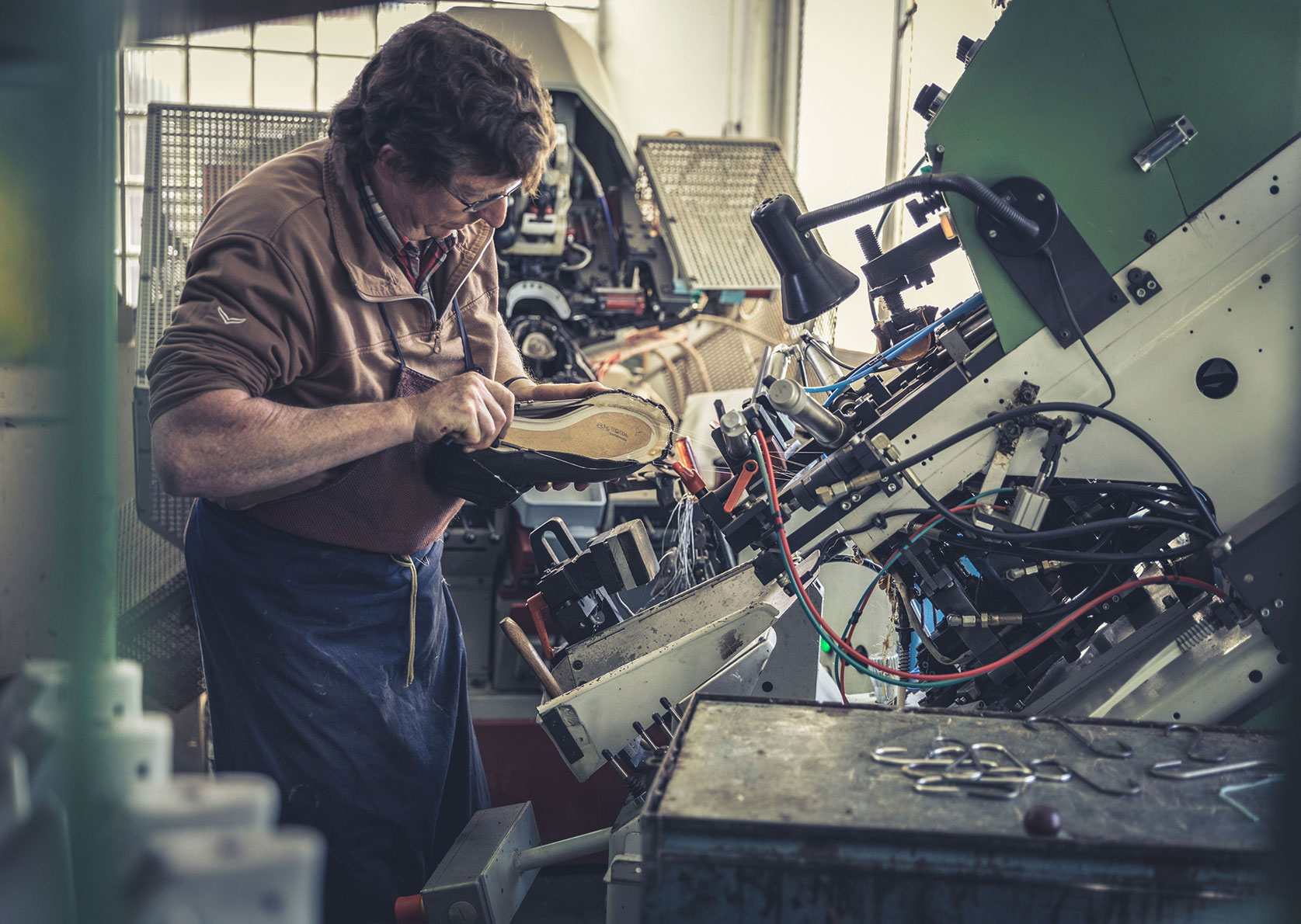
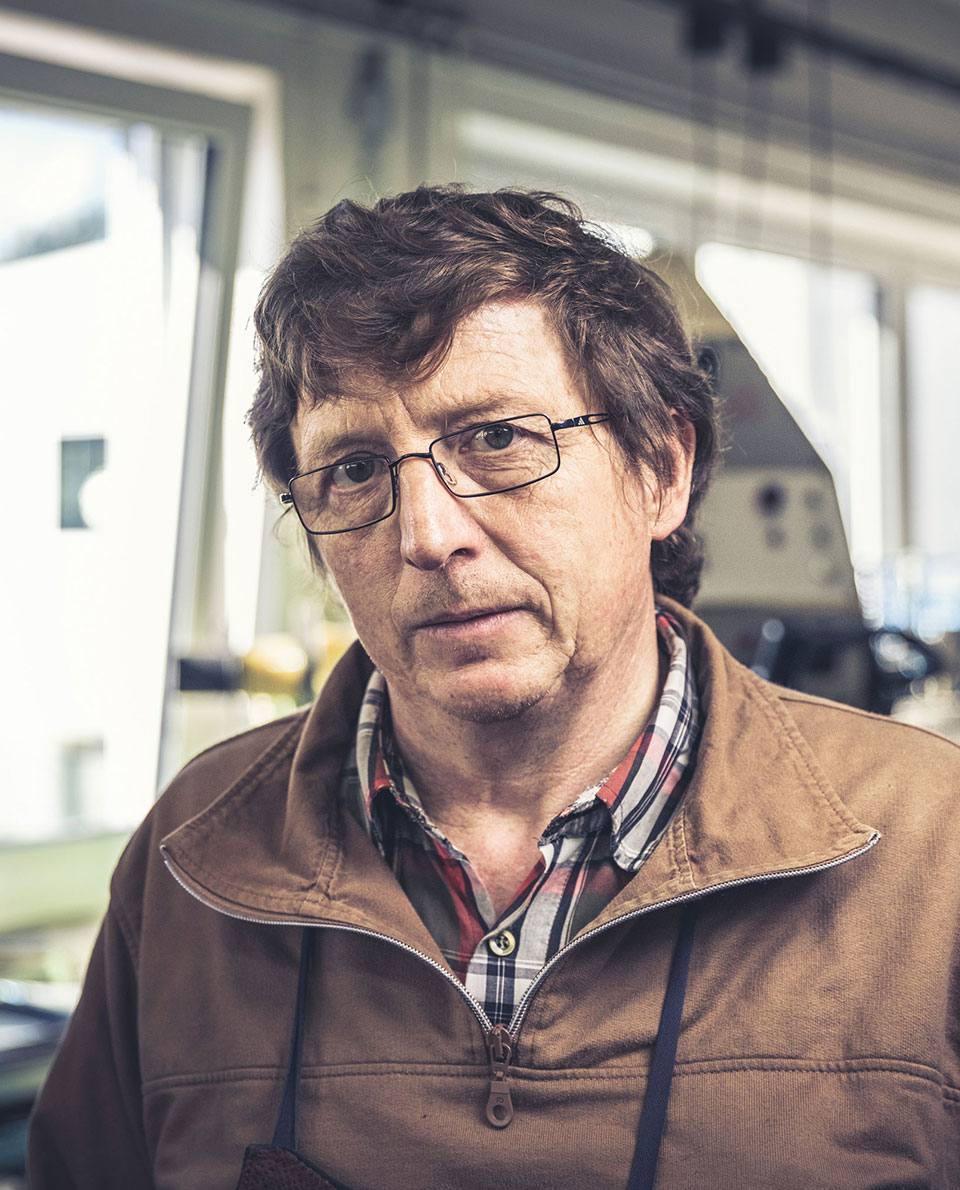
“If it ain’t broke, don’t fix it” – the saying embodies Rolf’s philosophy when it comes to machinery. “You shouldn’t make changes when things are running well. The more you change, the less accurate they might get. If the set-up is working then everything is alright as it is.”
Rolf is responsible for a range of different tasks at Reck, including making HANWAG double-stitched models. He loves good-quality footwear and is very happy to see that HANWAG is keeping alive the tradition of handcrafted double stitching. “Double-stitched footwear is particularly sturdy and long lasting. And you can have them resoled too. The long-term investment in such good boots and shoes is definitely worth it.”
Rolf continues to uphold high standards, despite the familiar routine of his work: “With every shoe that I make, I ask myself if I would be prepared to buy it myself. That’s my quality standard.”
3 Questions for Rolf
-
What’s the most important aspect of your job?
“Experience. With the right technique, the work is not that difficult.”
-
What does HANWAG mean to you?
“Quality. That’s what it’s all about.”
-
What would you like to wish HANWAG for the next 100 years?
“That it continues to be successful. After all, it would be a shame to see such an old, traditional construction like double stitching die out.”
Next stop on the ‘Made in Europe’ road trip: a footwear dynasty in Bosnia
